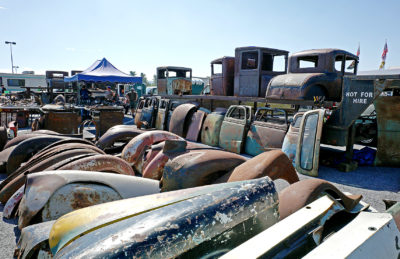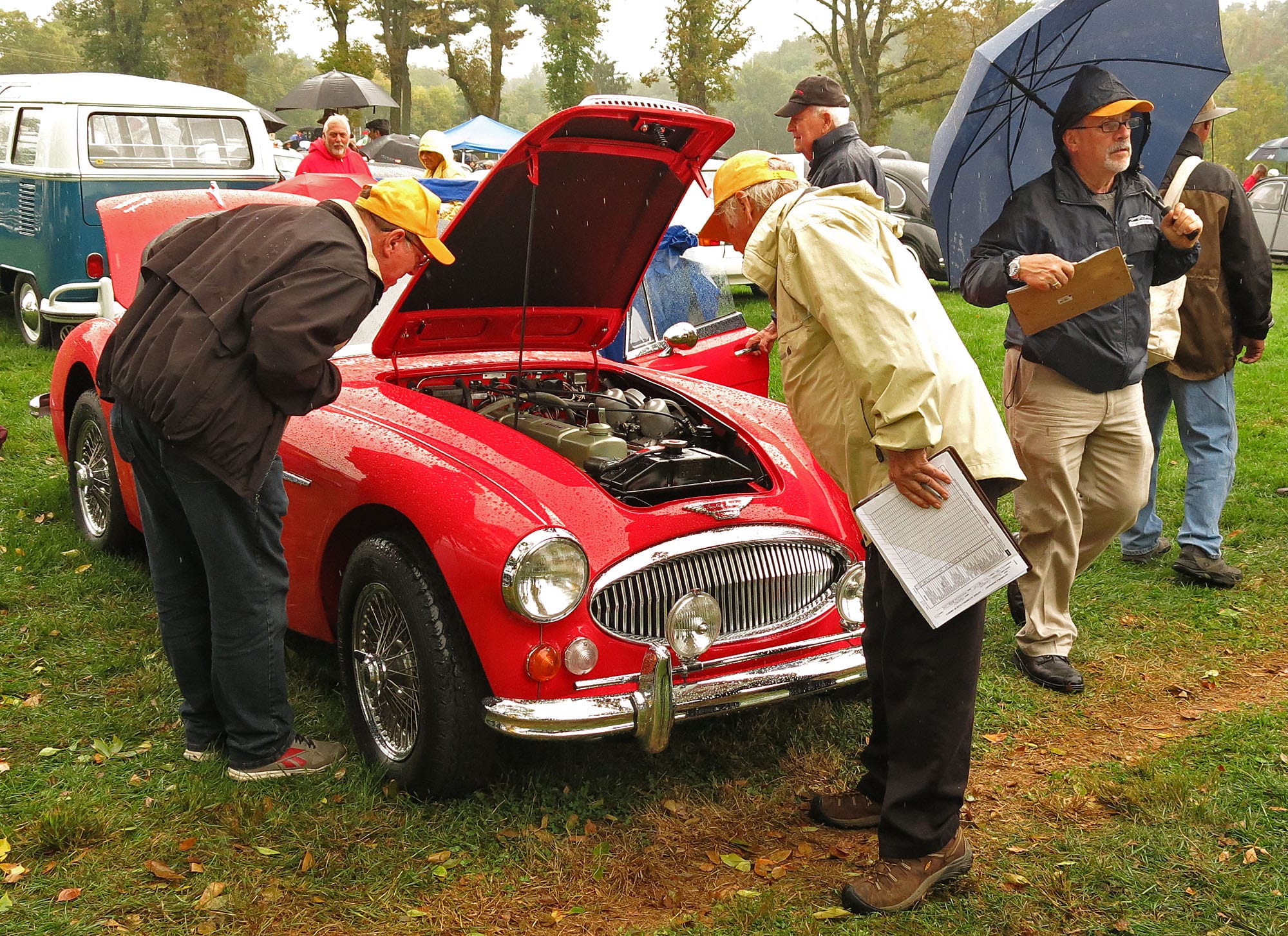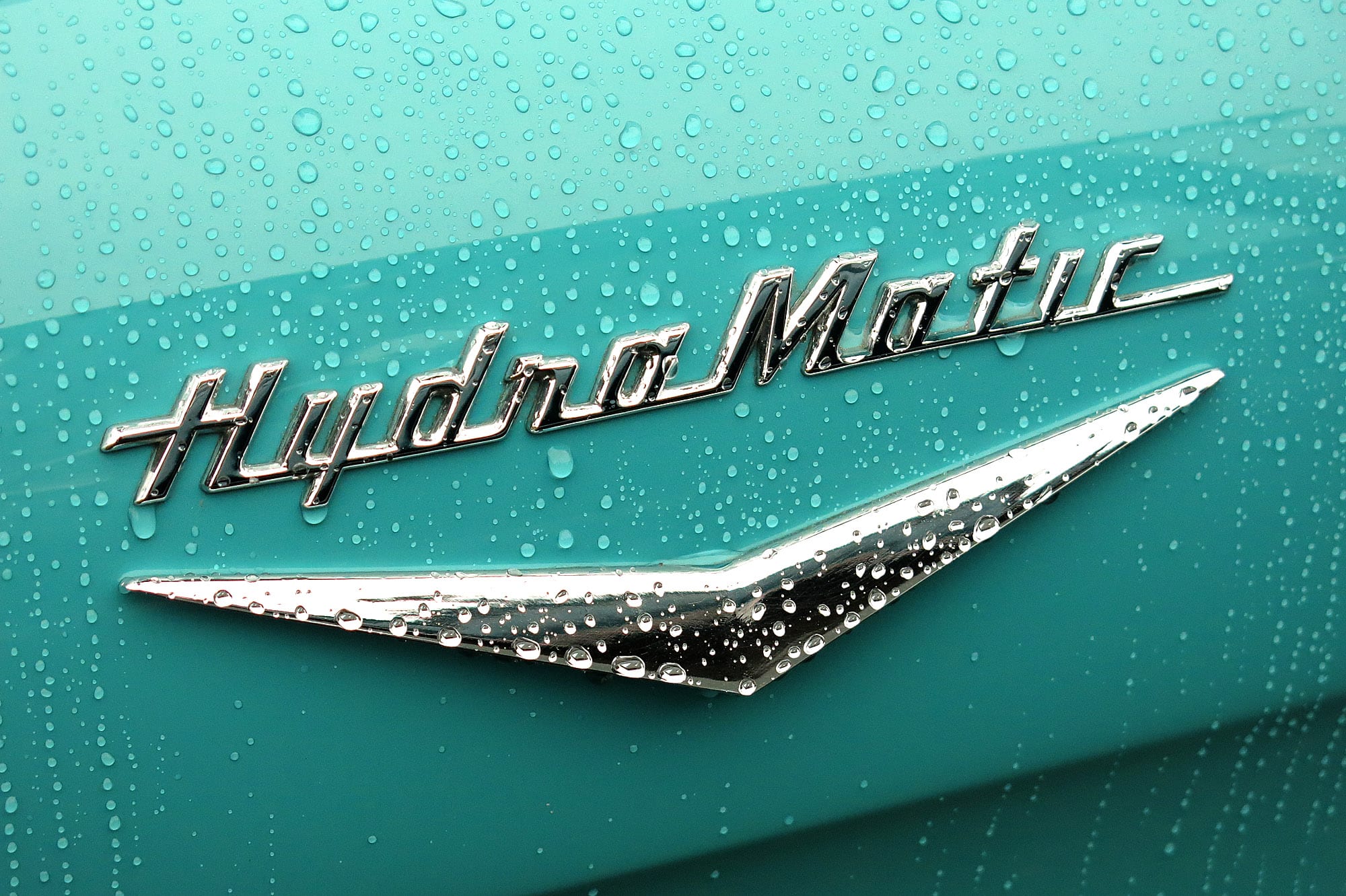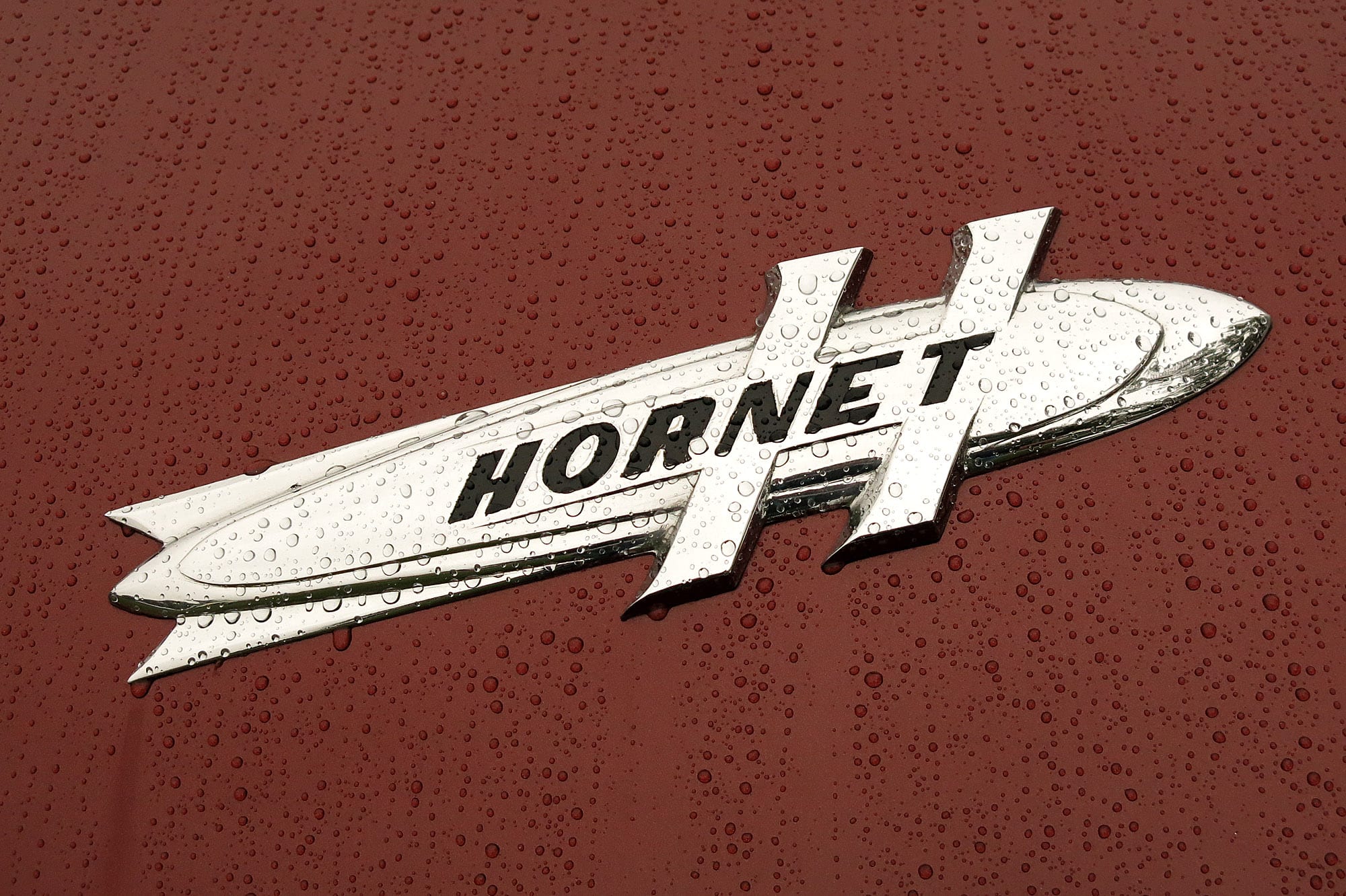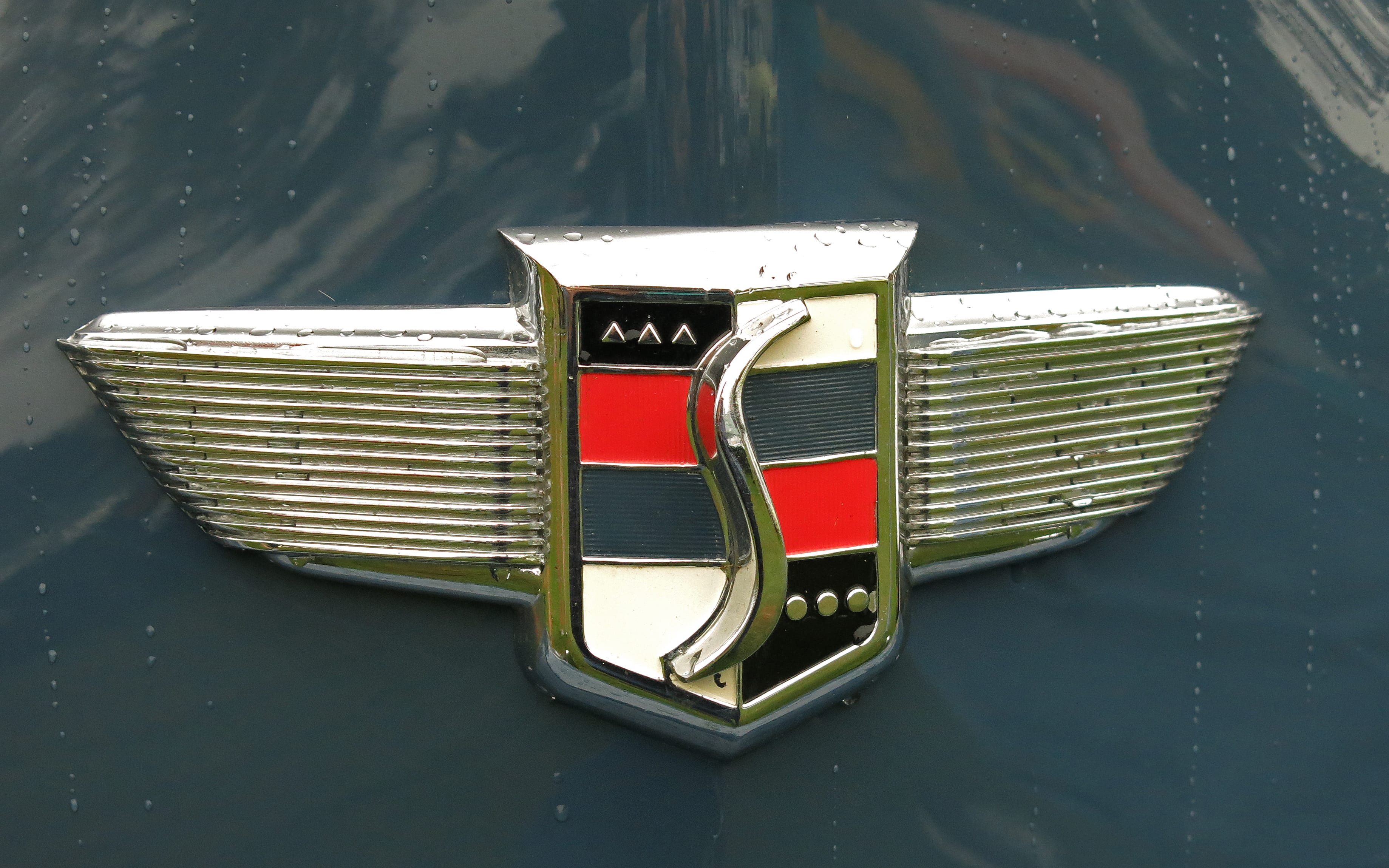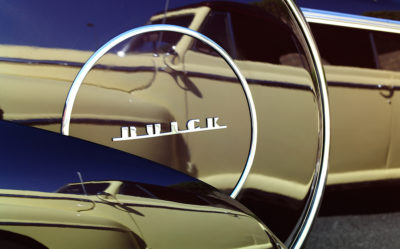Modern Day Travels with Charlie; A Tale of Two Car Cuys
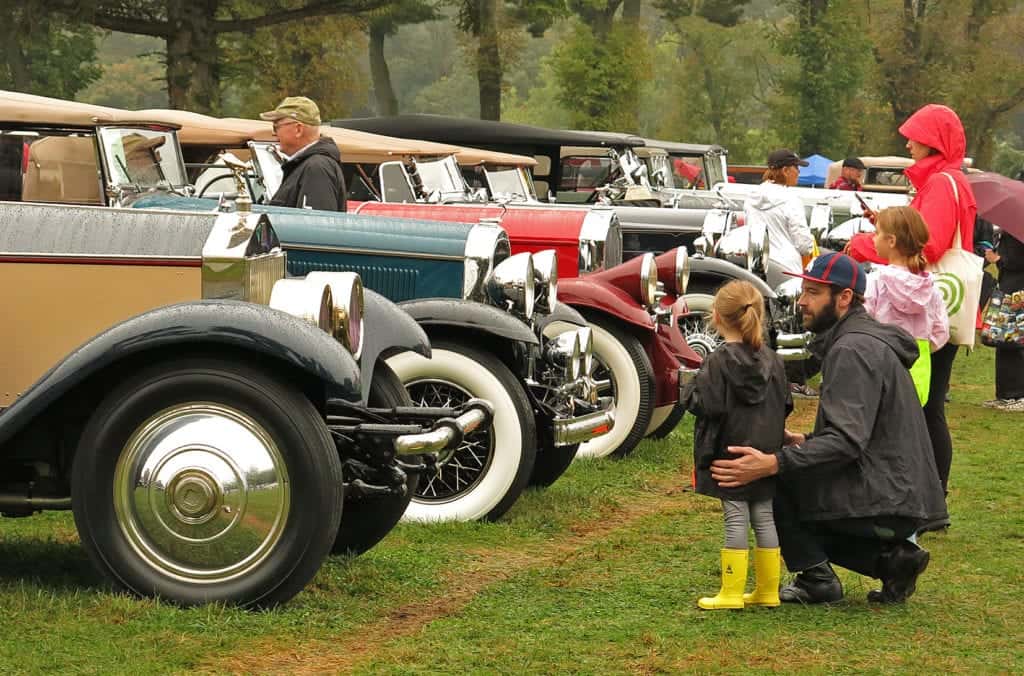
Hersheypark – that locus of chocolate fantasies – is just 160 miles from my home in New Jersey. But my recent trip to Hershey for the fall gathering of the Antique Automobile Club of America started in South Africa.
Bear with me. This is a tale of how passion for cars crosses continents and cultures, and how some of the best automotive journeys take oddly circuitous routes.
Hershey has become a high-priority October destination for me only lately. The meet, begun in 1955, traditionally focused on cars that long predate my boomer generation. But postwar vehicles, my main interest, have become well represented on the sales lot and in the final-day judged show of roughly 1,000 entries. There are now plenty from the 1950s and ’60s, so I’m on board.
Still, a rapidly filling October calendar was threatening to keep me from attending Hershey 2016. Then last February I met my older daughter, Julia, in South Africa to traverse the Cape on motorcycles during the Southern Hemisphere’s summer. We stayed one night at the Coach House B&B of Charlie Turner and Sharon Simons in the historic wine-country town of Franschhoek.
When Charlie saw me taking photos of the couple’s turquoise-and-white Metropolitan he invited us into the garage, where he was restoring a ’53 Chevy pickup. With some people there is an instant connection, and Charlie was one of those for me. Back in England, where he had lived until 15 years ago, he had specialized in VW repair and become known as “Volkswagen Charlie.” Now in South Africa he was just one car guy thrilled to be talking to another.
The topic turned to Hershey, and Charlie — though still only in his fifties — declared the fall meet to be at the top of his bucket list. At first this sounded odd, and not just because it would mean flying 16 hours each way. Hershey, for all its charms, lacks the cachet of the Monaco Grand Prix or the Pebble Beach Concours d’Elegance. Putting it at the top of one’s bucket list was like celebrating a golden wedding anniversary at Red Lobster instead of Le Bernardin.
But Charlie prefers tracking down obscure parts and making a fender fit just right to walking down a line of look-don’t-touch art objects. You had to like this guy. I told Charlie that if he came to Hershey, I’d meet him there. Thus began my travel with Charlie (apologies here to John Steinbeck, whose 1962 book about his pickup-truck tour of America with his poodle was titled Travels with Charley).
On a sunny day earlier this month we met in Hershey, trading texts to rendezvous at a Jaguar XK150 on display. Our first sortie was to the horseshoe roadway, the Car Corral, to view cars offered by private sellers. The quality of the cars impressed Charlie. Few showed the neglect he termed as having “gone to wreck and ruin.”
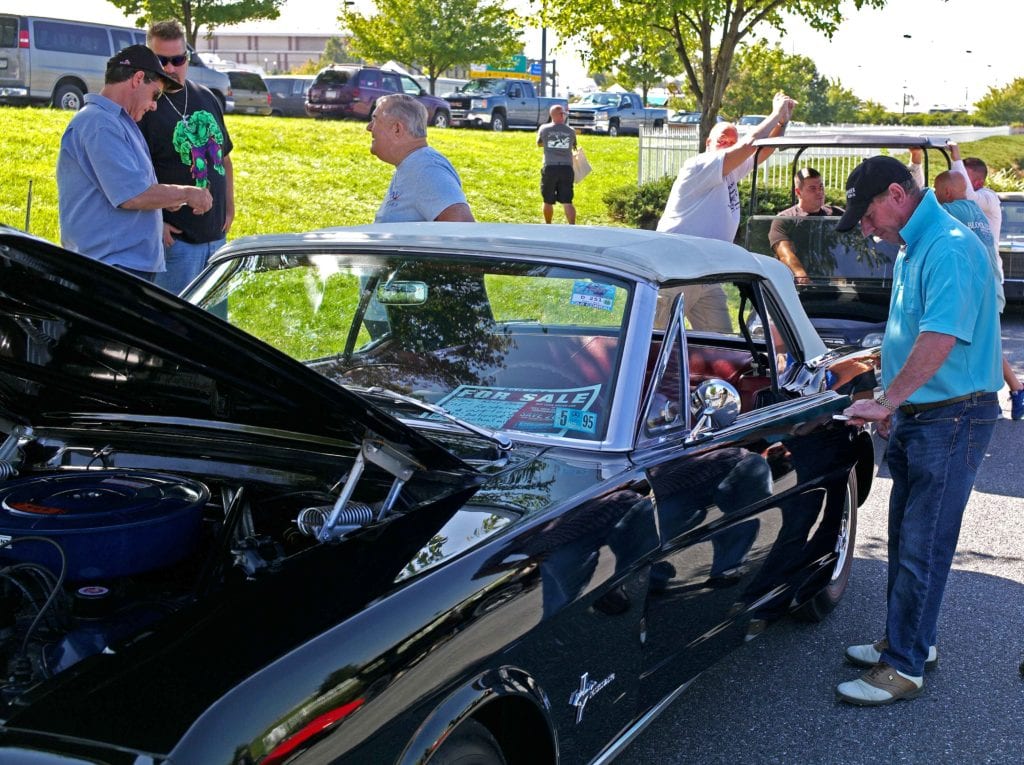
Mustangs caught Charlie’s attention, thanks to their status as an American icon. Charlie’s rental car was a new Mustang, which he found wanting in the quality of interior trim but impressive in performance. “I only put it into Sport mode once,” he said. “I don’t need that.”
Despite the foreign origin of Mustangs to a Briton/South African, Charlie’s well-trained eye enlightened me to occasional bungled repairs, mismatched fasteners and poorly aligned panels. In return, he tolerated my lectures on the Boss 302, Cobra Jet 428 and eventually, the Camaro Z/28 and Corvette.
When I laid out the cautionary tale of people replicating desirable models – making a Pontiac GTO out of an ordinary LeMans, which Americans would call a clone – Charlie knew the game. “Oh, we call those jackals,” he explained.
What I got in return was schooling in “world car” design, a reality long preceding the term’s coinage. Almost every time we admired a significant model – say a Thunderbird or Corvair – Charlie cited a European car with a strikingly similar roofline, grille or tail-light treatment. References to the Ford Consul, Victoria and Zephyr, NSU, Singer Gazelle and Vauxhall Cresta sounded strange to my American ear.
When we ran out of for-sale cars to ponder it was off to the swap meet, where, the AACA reported, some 9,000 vendor spaces lined miles of aisles. Charlie sought out small parts for his pickup: windshield trim (overpriced); weather seal strip (cheaper than at home); and fasteners (many not easily found in the Cape Town area). We admired the hefty Auburn pistons and $10,000 vintage supercharger kits for Flathead V8s, $15,000 neon signs and $2 head gaskets. Here, shoppers wear sandwich boards announcing what parts they need, on the chance someone will volunteer a lead.
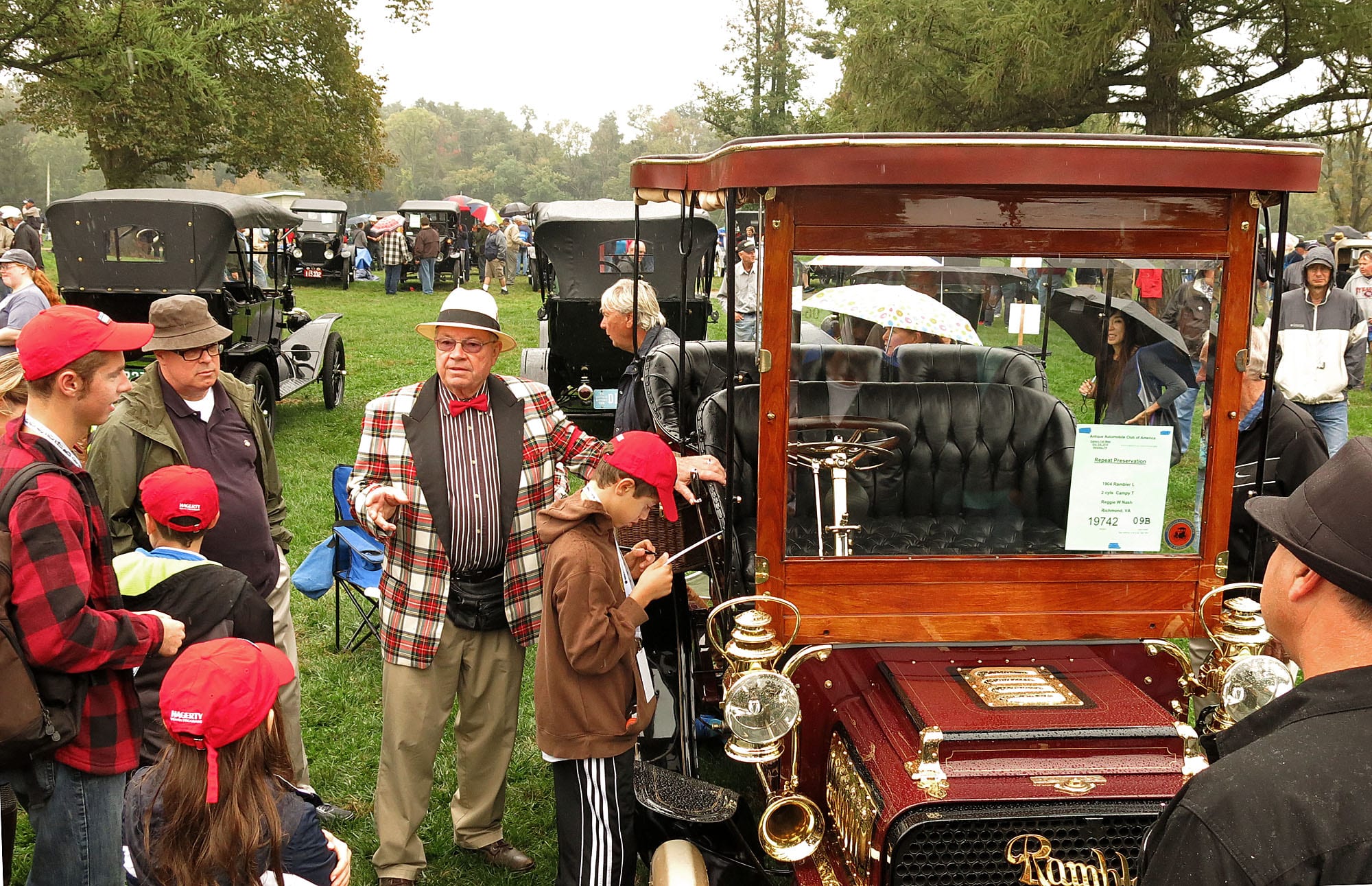
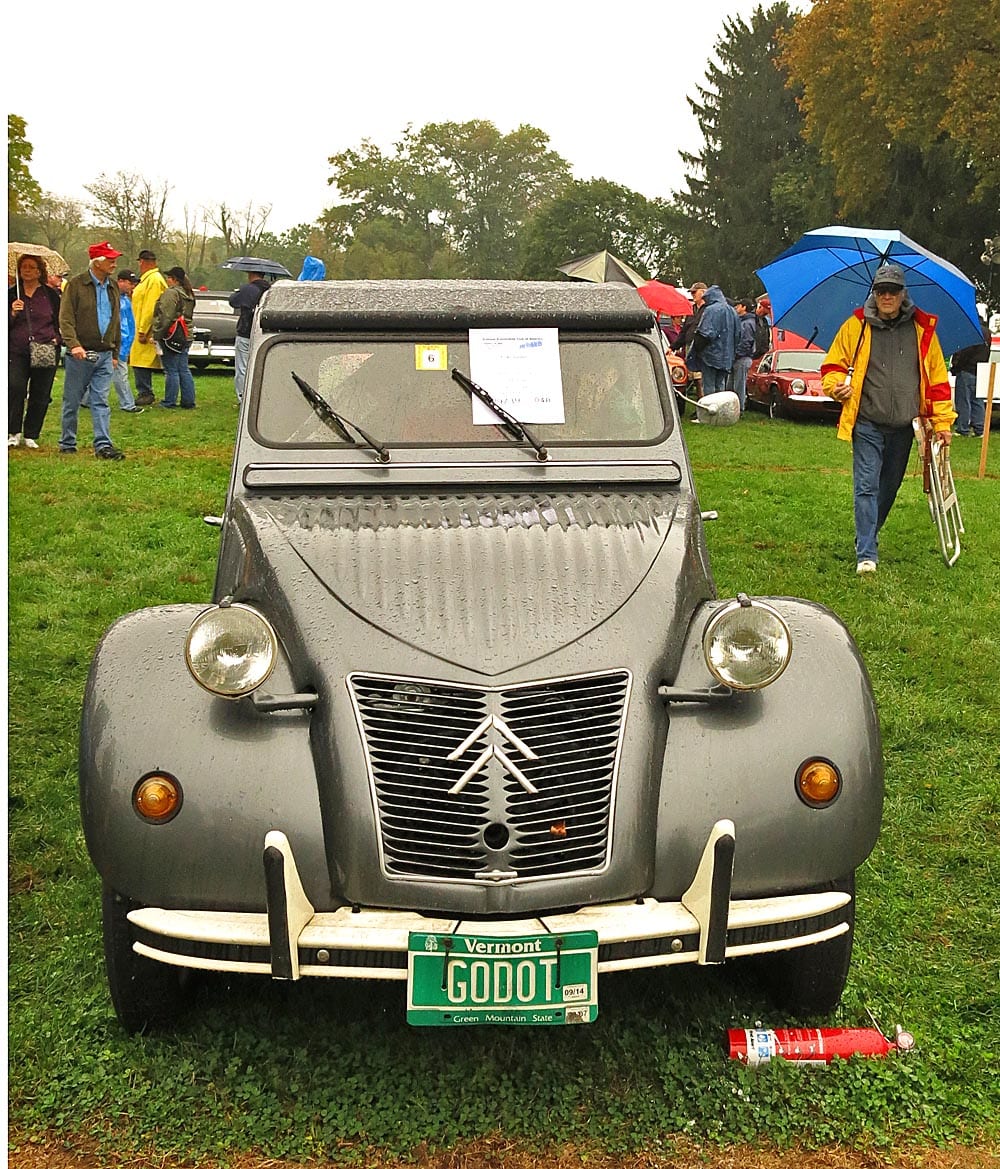
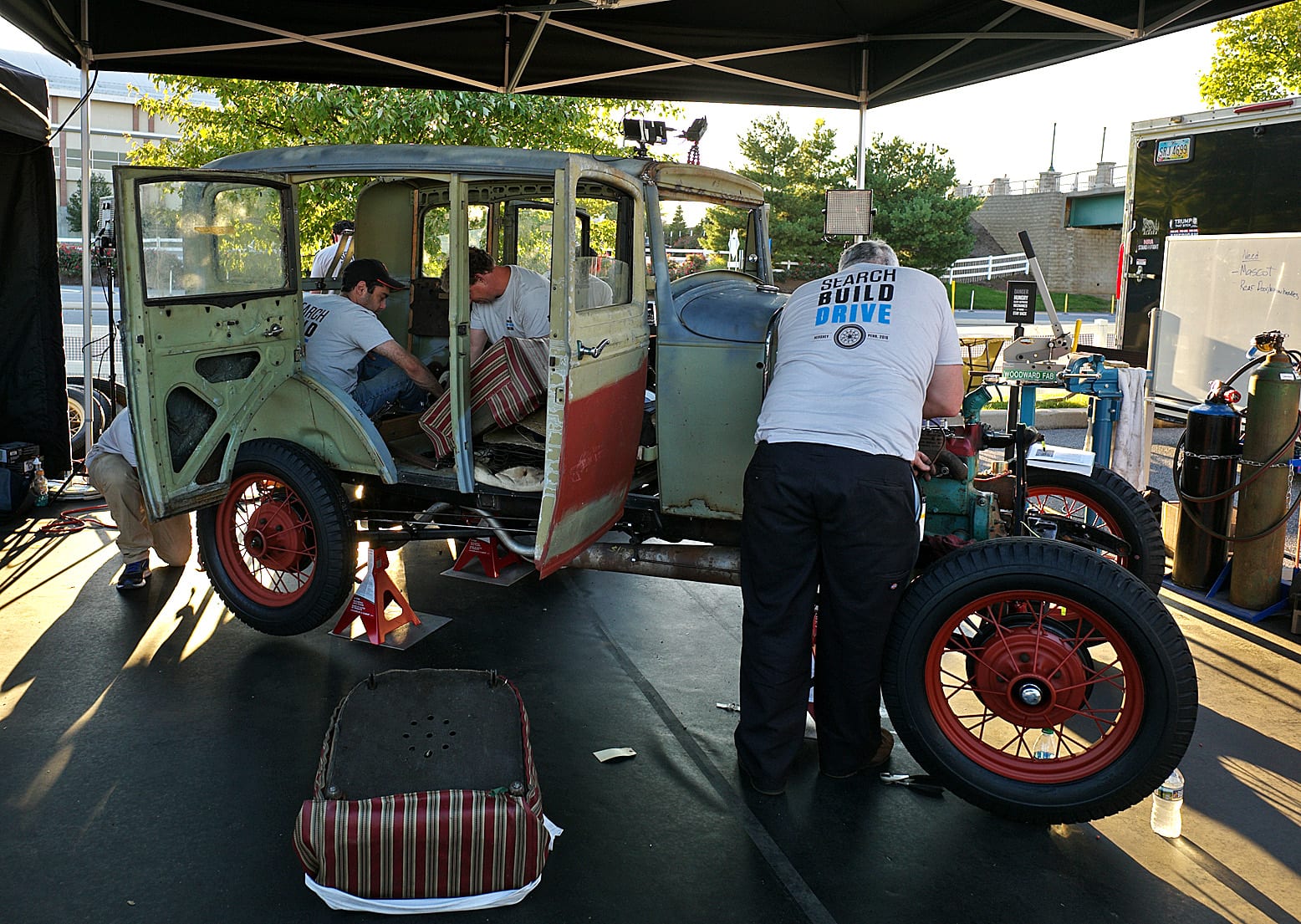
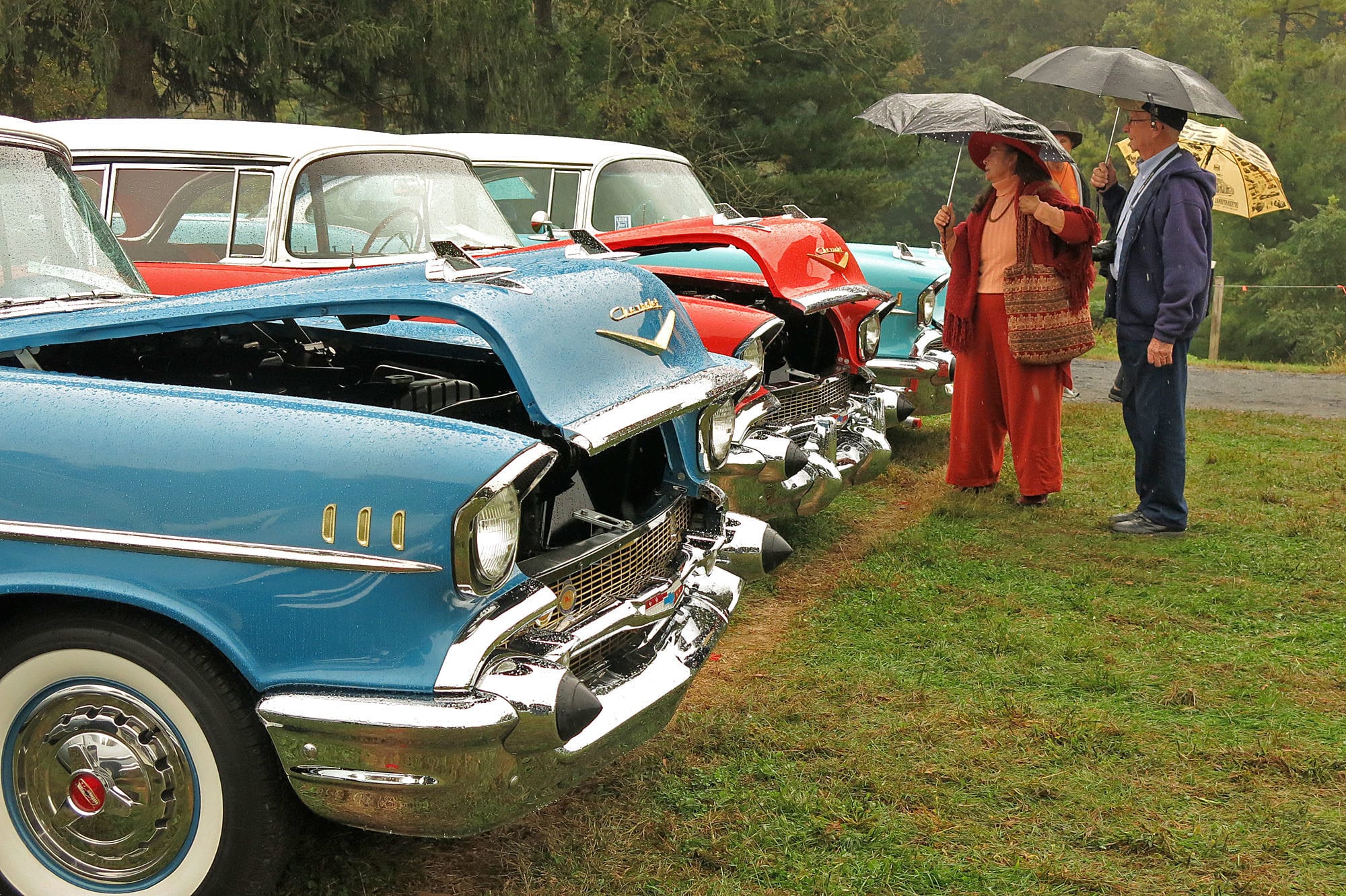
Hershey is more than just one thing. It’s a bountiful hunting ground for obscure parts as well as a venue where a Duesenberg goes for more than $2 million. RM Sotheby’s ran more than 130 lots across the auction block – racking up $11.6 million in sales, with models ranging in age from a 1903 Oldsmobile Model R Runabout ($49,500) to a 1973 Corvette Stingray ($12,100).
There are no automaker displays tempting you to sit in the new models. But you could drop by to watch a crew of Hagerty Insurance mechanics assembling a running 1930 Ford Model A using a chassis they’d brought from Michigan and everything else purchased at the swap meet.
Hershey is where the Marriott provides cleaning supplies and towels for guests to wash their cars before heading to the show field. There’s no admission fee, though there’s a charge to park. You can bank on chilly mornings and some rain. We got wet only on the final day, when Charlie fell hard for a ’55 Chevy Cameo pickup (in turquoise and white, don’t you know). Alas, it wasn’t for sale.
Charlie returned to South Africa having spent only about $50 for parts for his own pickup restoration. A few days later I got this email: “Only got back on the Tuesday evening, very late and been straight into the garage. Planning to drive it to Paarl to have the wires done.”
I knew Charlie had loved his bucket trip, and was right back in his element.
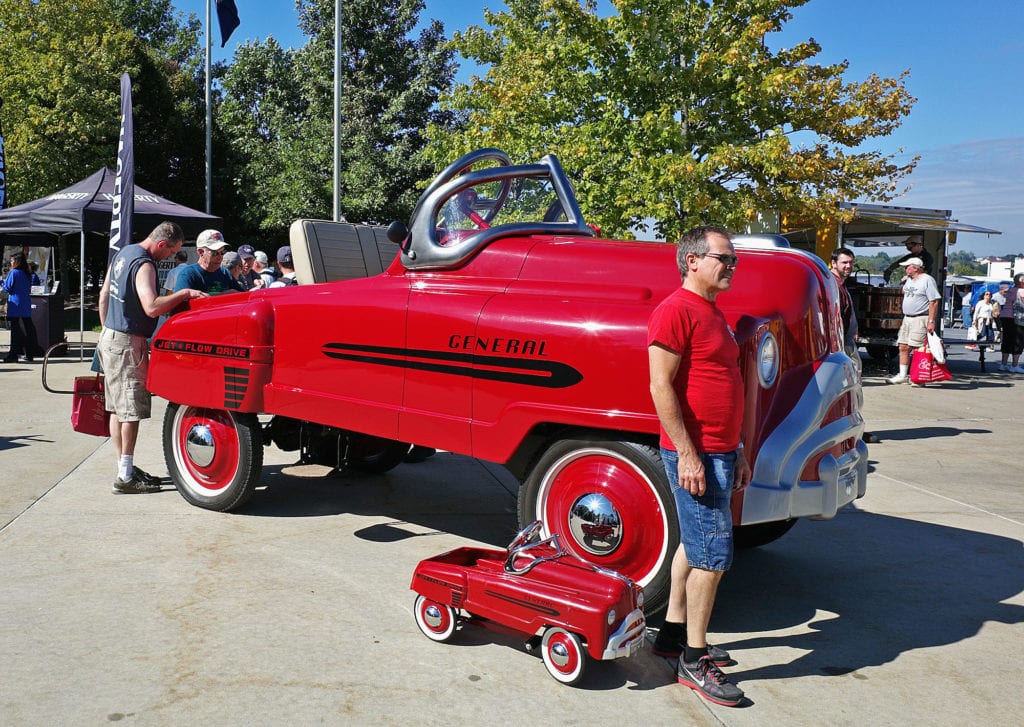
——————————
Norman Mayersohn’s 44 years as an automotive journalist include 11 years as deputy editor of the automotive section of The New York Times. In his drag-racing days, he won two National Hot Rod Association West Coast divisional titles. He’s also the proud owner of a 1967 Camaro SS350 that has been in his family since 1979.

